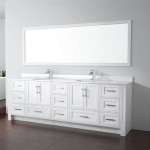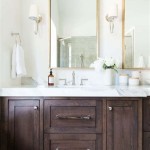Colored Bathroom Sinks: A Comprehensive Guide
Bathroom sinks are essential fixtures, serving a practical purpose while contributing significantly to the overall aesthetic of the space. Traditionally, white has been the dominant color choice for bathroom sinks, but the design landscape is evolving. Colored bathroom sinks are gaining popularity, offering homeowners a chance to personalize their bathrooms and create unique, visually appealing environments. This article explores the various aspects of colored bathroom sinks, including the available options, materials, design considerations, and the impact they can have on bathroom design.
The Spectrum of Color: Exploring Available Options
The term "colored bathroom sink" encompasses a vast range of hues, from subtle neutrals to bold and vibrant shades. Understanding the available color options is the first step in selecting the right sink for a particular bathroom. Here’s a breakdown of some popular categories:
Neutral Tones: These colors offer a sophisticated and timeless appeal. Creams, beiges, grays, and even lighter shades of brown provide a versatile backdrop that complements various bathroom styles. Neutral-colored sinks are particularly useful in smaller bathrooms, as they tend to make the space feel larger and more airy. They also pair well with bolder tile patterns or accent colors, allowing other design elements to take center stage without overwhelming the room.
Earthy Tones: Drawing inspiration from nature, earthy tones include greens, blues, and browns that evoke a sense of tranquility and connection to the outdoors. These colors are ideal for creating a spa-like atmosphere in the bathroom. A sage green sink, for example, can add a refreshing touch, while a deep brown sink can provide a grounding element to the space. Earthy tones often work well with natural materials like wood and stone, creating a cohesive and organic look.
Bold and Vibrant Colors: For homeowners seeking a more dramatic statement, bold and vibrant colors offer endless possibilities. Red, orange, yellow, and cobalt blue sinks can instantly transform the bathroom into a vibrant and energetic space. These colors are best used in bathrooms with neutral walls and floors to avoid overwhelming the senses. They can also be strategically incorporated to create a focal point, drawing the eye towards the sink as a key design element.
Pastel Shades: Adding a touch of softness and whimsy, pastel shades like light pink, baby blue, mint green, and lavender are perfect for creating a calming and inviting bathroom. These colors are often associated with vintage or romantic styles, but they can also be incorporated into modern designs for a touch of unexpected charm. Pastel-colored sinks pair well with light-colored walls and delicate patterns, creating a serene and relaxing environment.
Dark and Moody Colors: On the opposite end of the spectrum, dark and moody colors like deep navy, charcoal gray, and matte black can add a touch of sophistication and drama to the bathroom. These colors create a sense of depth and luxury, and they work particularly well in larger bathrooms with ample natural light. Dark-colored sinks can be paired with metallic accents like gold or brass to create a glamorous and opulent look.
Material Matters: The Impact of Material on Color and Durability
The material used to construct a bathroom sink plays a crucial role in its color, durability, and overall aesthetic. Different materials react differently to pigments and glazes, resulting in variations in color intensity and finish. Here are some common materials used in colored bathroom sinks:
Vitreous China: Vitreous china is a popular choice for bathroom sinks due to its durability, non-porous surface, and ease of cleaning. It is made by firing porcelain enamel to a high temperature, resulting in a smooth, glossy finish. Vitreous china readily accepts colored glazes, allowing for a wide range of color options. Sinks made of vitreous china are also relatively affordable, making them a budget-friendly option.
Porcelain: Similar to vitreous china, porcelain is another durable and non-porous material that is commonly used for bathroom sinks. Porcelain is slightly more resistant to chipping and staining than vitreous china, making it a good choice for high-traffic bathrooms. Porcelain sinks also come in a variety of colors and finishes, from glossy to matte.
Fireclay: Fireclay is a durable and heat-resistant material made from a mixture of clay and minerals. It is fired at extremely high temperatures, resulting in a dense, non-porous surface that is resistant to scratches and stains. Fireclay sinks are often heavier and more expensive than vitreous china or porcelain sinks, but they offer superior durability and a unique, handcrafted look. Fireclay sinks are available in a range of colors, often with a slightly textured finish.
Cast Iron: Cast iron sinks offer exceptional durability and a classic, timeless appeal. They are made by pouring molten iron into a mold and then coating it with a layer of enamel. Cast iron sinks are known for their weight and resistance to chipping and cracking. While they can be more expensive than other materials, they offer a long lifespan and a luxurious feel. Cast iron sinks are available in a variety of colors, including both solid and speckled finishes.
Stone: Natural stone materials like granite, marble, and travertine can be used to create stunning and unique colored bathroom sinks. The color and veining patterns of natural stone vary depending on the specific type of stone, making each sink one-of-a-kind. Stone sinks are durable and resistant to scratches, but they require regular sealing to prevent staining. They are also typically more expensive than other materials.
Glass: Glass sinks offer a contemporary and stylish look. They are made from tempered glass, which is strong and resistant to shattering. Glass sinks are available in a variety of colors and shapes, and they can be either clear or opaque. They are relatively easy to clean, but they can be prone to water spots and scratches. Glass sinks are often more expensive than vitreous china or porcelain sinks.
Design Considerations: Integrating Colored Sinks into Bathroom Aesthetics
Choosing a colored bathroom sink involves more than just selecting a favorite color. It requires careful consideration of the overall bathroom design, including the existing color palette, style, and size of the space. Here are some key design considerations to keep in mind:
Color Harmony: The color of the sink should complement the other colors in the bathroom, including the walls, floors, tiles, and fixtures. A color wheel can be a useful tool for understanding color relationships and creating harmonious color schemes. Consider using complementary colors (colors that are opposite each other on the color wheel) to create a sense of contrast and visual interest, or use analogous colors (colors that are next to each other on the color wheel) to create a more subtle and cohesive look.
Style and Theme: The color and style of the sink should align with the overall theme of the bathroom. For example, a pastel-colored sink would be well-suited for a vintage or romantic bathroom, while a dark-colored sink would be more appropriate for a modern or contemporary bathroom. Consider the overall aesthetic of the space and choose a sink that enhances the desired style.
Size and Proportion: The size of the sink should be proportional to the size of the bathroom. A large sink can overwhelm a small bathroom, while a small sink can look insignificant in a large bathroom. Consider the dimensions of the vanity or countertop and choose a sink that fits comfortably within the available space. Also, consider the depth of the sink, as a very shallow sink may not be practical for everyday use.
Lighting: Lighting plays a crucial role in how colors appear in a space. Natural light tends to make colors appear brighter and more vibrant, while artificial light can alter the appearance of colors. Consider the type of lighting in the bathroom when choosing a colored sink, and test the color of the sink under different lighting conditions to ensure that it looks its best.
Personal Preference: Ultimately, the choice of a colored bathroom sink is a personal one. Choose a color that you love and that makes you feel good in the space. Don't be afraid to experiment with different colors and styles to create a bathroom that reflects your unique personality and taste. Consider the long-term appeal of the color and whether it is something that you will continue to enjoy for years to come.
Maintenance and Cleaning: Different colored sinks may require different cleaning methods. Lighter colored sinks may show stains or water spots more easily than darker colored sinks. Consider the maintenance requirements of different materials and colors when making a decision. Choose a color and material that is easy to clean and maintain to keep the sink looking its best for years to come.

11 Colorful Sinks That Add Character To Any Kitchen Or Bath Residential S

9 Colorful Bathroom Sinks To Give Your Space A Bright Refresh

11 Colorful Sinks That Add Character To Any Kitchen Or Bath Residential S

Colorful Vintage Bathroom Sinks From Match My Tile Retro Renovation

7 Unexpected Color Splashes For Bathroom Sinks

Bathroom Ideas Candy Color Sinks The Next Design Trend To Try Sunset

Cement Sinks Color And Texture Of Pigmented Concrete In Bathroom Space Archdaily

These Colored Bathroom Sinks Are Instant Mood Boosters Architectural Digest

Cement Sinks Color And Texture Of Pigmented Concrete In Bathroom Space Archdaily

The Color Pink In Bathroom Sinks Tubs And Toilets From 1927 1962 Retro Renovation Accessories Sink Decor
Related Posts







